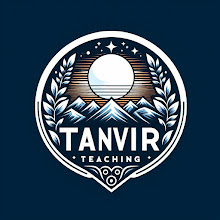Unveiling the Downsides: Exploring the Disadvantages of Integrating ChatGPT in Education
Introduction:
In recent years, Artificial Intelligence (AI) has become an integral part of various sectors, including education. ChatGPT, a cutting-edge language model developed by OpenAI, has gained popularity for its natural language processing capabilities. However, beneath the surface, there are disadvantages that educators and institutions need to consider. In this article, we'll delve into the drawbacks of incorporating ChatGPT in educational settings.
A Brief Overview of ChatGPT's Role in Education
ChatGPT, with its ability to generate human-like text, has been introduced in education to enhance learning experiences. It serves as a virtual assistant, providing students with instant responses and facilitating interactive learning. Despite its initial allure, there are inherent drawbacks that merit attention.
Disadvantages of ChatGPT in Education
A: Limitations in Understanding Context
While ChatGPT excels at processing vast amounts of information, it can struggle with contextual understanding. In educational scenarios, this limitation becomes apparent when students pose nuanced questions or require clarification on specific topics. The model may misinterpret context, leading to inaccurate or irrelevant responses.
B:
Lack of Critical Thinking Skills
Another drawback lies in the absence of critical thinking skills. ChatGPT generates responses based on patterns and data but lacks the ability to engage in genuine critical thinking. This deficiency may hinder the development of students' analytical abilities, as they may rely on the model for answers without thoroughly assessing information.
Privacy Concerns in Educational Settings
A: Data Security and Privacy Issues
Educational institutions are entrusted with sensitive student information. Integrating ChatGPT raises concerns about data security and privacy. As the model processes user inputs, there's potential for the unintentional exposure of confidential information. This poses a risk to both students and educators, demanding stringent measures to safeguard sensitive data.
B: Ethical Considerations in AI Use
Expanding on the privacy concerns, it's crucial to delve into the ethical considerations surrounding AI use in education. As institutions increasingly rely on AI models, questions arise about the responsible handling of student data. Addressing these ethical concerns becomes paramount to ensure a secure and trustworthy educational environment.
C:
Legal Implications of AI in Education
In addition to ethical concerns, the legal implications of AI in education cannot be overlooked. Educational institutions need to navigate complex legal frameworks related to data protection, intellectual property, and accountability. Legal experts and educators must work collaboratively to establish guidelines that protect both students and institutions.
Customization Challenges for Diverse Learning Needs
A: One-Size-Fits-All Approach
ChatGPT operates on a generalized approach, offering the same responses to all users. This lack of personalization is a disadvantage in education, where diverse learning needs and preferences exist. Students with varying learning styles may find the model's responses insufficient, highlighting the importance of a more tailored educational experience.
B: Language and Cultural Sensitivity
Another challenge arises in the model's understanding of diverse languages and cultural nuances. ChatGPT may struggle with idiosyncrasies, leading to miscommunication and potential misunderstandings. Educational content needs to be sensitive to cultural differences, and the model's limitations in this regard could hinder effective communication.
C: Overcoming Customization Challenges
While acknowledging the challenges, it's essential to explore strategies to overcome customization obstacles. Developing adaptive AI algorithms that can better understand individual learning needs and preferences is a crucial step toward enhancing the personalization of education through ChatGPT.
The
Challenge of Overreliance on Technology
A: Detrimental Effects of Overreliance
While ChatGPT facilitates instant responses, it may inadvertently contribute to a decline in human interaction. Overreliance on AI models can diminish the role of teachers and interpersonal communication, potentially affecting the development of essential social skills in students.
B: Balancing Act: AI and Human Interaction
Expanding on the detrimental effects, it's crucial to explore strategies for maintaining a balance between AI and human interaction in educational settings. Recognizing the importance of both technological advancements and personal engagement is vital to harness the benefits of AI without compromising the essential human element of learning.
C: Integrating AI as a Supplement, Not a Replacement
To mitigate the risk of overreliance, educators should view AI, including ChatGPT, as a supplement rather than a replacement for traditional teaching methods. Integrating AI tools strategically can enhance the learning experience while preserving the invaluable human touch in education.
Conclusion: Striking a Balance for Effective Education
In conclusion, while ChatGPT offers innovative solutions for interactive learning, it comes with its fair share of disadvantages. From contextual limitations to privacy concerns, ethical considerations, challenges in customization, and the risk of overreliance on technology, educators must carefully navigate these issues. Striking a balance between AI assistance and traditional teaching methods remains essential for fostering a well-rounded educational experience that addresses the diverse needs of students. As the integration of AI in education continues, a thoughtful and cautious approach is necessary to maximize the benefits while mitigating the potential downsides.






.jpg)

.jpg)






0 Comments